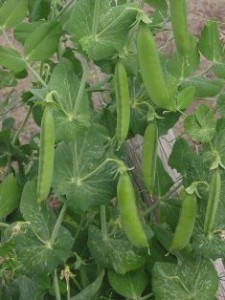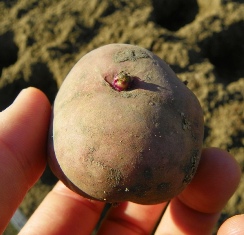Spring’s First Crops – Peas and Potatoes
go.ncsu.edu/readext?395936
en Español / em Português
El inglés es el idioma de control de esta página. En la medida en que haya algún conflicto entre la traducción al inglés y la traducción, el inglés prevalece.
Al hacer clic en el enlace de traducción se activa un servicio de traducción gratuito para convertir la página al español. Al igual que con cualquier traducción por Internet, la conversión no es sensible al contexto y puede que no traduzca el texto en su significado original. NC State Extension no garantiza la exactitud del texto traducido. Por favor, tenga en cuenta que algunas aplicaciones y/o servicios pueden no funcionar como se espera cuando se traducen.
Português
Inglês é o idioma de controle desta página. Na medida que haja algum conflito entre o texto original em Inglês e a tradução, o Inglês prevalece.
Ao clicar no link de tradução, um serviço gratuito de tradução será ativado para converter a página para o Português. Como em qualquer tradução pela internet, a conversão não é sensivel ao contexto e pode não ocorrer a tradução para o significado orginal. O serviço de Extensão da Carolina do Norte (NC State Extension) não garante a exatidão do texto traduzido. Por favor, observe que algumas funções ou serviços podem não funcionar como esperado após a tradução.
English
English is the controlling language of this page. To the extent there is any conflict between the English text and the translation, English controls.
Clicking on the translation link activates a free translation service to convert the page to Spanish. As with any Internet translation, the conversion is not context-sensitive and may not translate the text to its original meaning. NC State Extension does not guarantee the accuracy of the translated text. Please note that some applications and/or services may not function as expected when translated.
Collapse ▲ Garden peas, and their edible-podded relatives, snow peas and sugar snaps are easy and productive crops to grow. In coastal areas, peas can be planted outside as early as mid-January. As you move further inland, delay planting by a week or two but make sure to get in the ground by mid-February at the latest. These cool season vegetables need to mature before hot weather sets in.
Garden peas, and their edible-podded relatives, snow peas and sugar snaps are easy and productive crops to grow. In coastal areas, peas can be planted outside as early as mid-January. As you move further inland, delay planting by a week or two but make sure to get in the ground by mid-February at the latest. These cool season vegetables need to mature before hot weather sets in.
Peas should be grown from seed in the garden. Soaking your pea seeds before planting will speed germination. Place them in a jar of water and soak them for 6-8 hours just before planting. I often set mine to soak the night before and plant them the next morning. If you have not grown peas in your garden before, treat them with inoculum (available online or at garden centers). Inoculum provides the beneficial bacteria that allow the pea plants to fix their own nitrogen.
Sow seeds an inch deep and one to two inches apart. Water well after sowing and keep moist until seedlings begin to emerge, usually within seven to ten days. Peas are a vining crop and benefit from a low trellis or even just a row of branches to climb on. I recommend making several small plantings 2-3 weeks apart as some plantings will perform better than others, depending on the season.
Fresh peas will be ready to harvest 65 to 80 days after planting. Tasty raw or cooked, many of my sugar snap and snow peas never make it as far as the house.
 Potatoes are great fun to grow and a great way to get kids interested in the garden. Potatoes can be planted in early February. Purchase seed potatoes from a garden center. These small potatoes have been grown under special conditions to ensure that they are free of diseases. Seed potatoes usually give better results than potatoes purchased from the grocery store or those held over from the previous season.
Potatoes are great fun to grow and a great way to get kids interested in the garden. Potatoes can be planted in early February. Purchase seed potatoes from a garden center. These small potatoes have been grown under special conditions to ensure that they are free of diseases. Seed potatoes usually give better results than potatoes purchased from the grocery store or those held over from the previous season.
Kennebec and Red Pontiac are classic varieties that do well in coastal North Carolina but I have great results with Yukon Gold. I love the moist texture and buttery taste of this gold-fleshed variety.
Cut seed potatoes into pieces that are each about the size of an egg and contain at least one eye. You can plant your seed pieces right away or sprout them indoors for a few weeks by placing them in a warm, sunny location.
Plant seed pieces six inches deep and ten inches apart in the row with three feet between rows. Keep in mind twelve pounds of seed potatoes can plant around one hundred feet of row and yield over two hundred pounds of spuds. Potatoes can also be grown successfully in large containers – I grow mine in 25 gallon pots but people have also been successful with trashcans, large baskets and similar containers.
As the shoots grow, “hill up” around the base of the plants with soil or mulch. New tubers are set between the seed potato and the surface of the soil. Depending on the variety, potatoes will take 85-110 days to grow to maturity. When the tops of the plants start to die back, it is time to dig the potatoes. Harvesting potatoes is a bit of a treasure hunt and fun for children of all ages!
Other cool season vegetables that you can plant in February include lettuce, spinach, radish, mustard, turnip greens, beets, turnips, kohlrabi, carrots, cabbage and broccoli.



